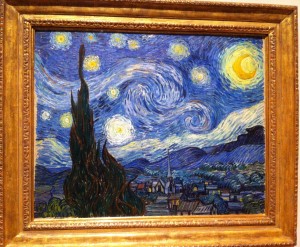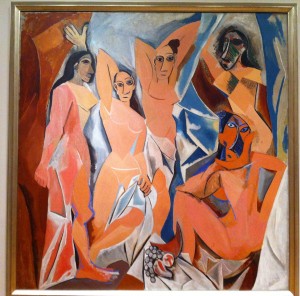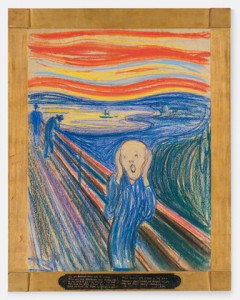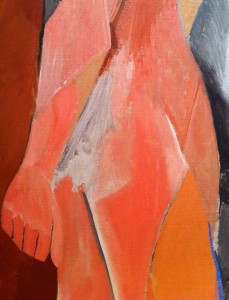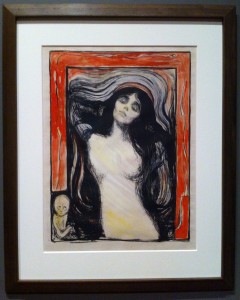The question of whether or not mechanical and digital images affect our perception of the original artwork takes us to the heart of art history, a discipline that since its inception has predicated the importance of authenticity.
In 1934 Walter Benjamin stated in his influential essay The Work of Art in the Age of Mechanical Reproduction that the concept of reproducing works of art is not a new phenomenon and can be traced back to antiquity. Furthermore, he argued that mass production of images not only challenges the notion of authenticity but it unquestionably impacts the way we perceive art.
79 years on, in light of gargantuan leaps in technological advancements, questioning the issues Benjamin raised appears as topical as ever.
This February, after almost a decade of looking at reproductions – I was finally able to study with my own eyes some of the world’s most iconic art works, exhibited in MoMA’s permanent and temporary collections in New York.
Experiencing these works first hand entirely eclipsed any previous opinions I had formed or reactions I had anticipated; though this may not be a great surprise, and I want to describe my experience more fully, in the hope of reiterating the importance of actively thinking about the way in which the proliferation of images continues to affect our understanding of art today.
Benjamin claimed: “That which withers in the age of mechanical reproduction is the aura of the work of art”. But, I was thrilled and reassured to find that the original works in MoMA retained their “aura”.
The raw, fleshy- fluorescent oranges and pinks used by Picasso for his figures in Les Demoiselles D’Avignon – were much cruder and more vulgar than I had thought. I felt that these colours exposed the women in new and challenging ways. I was also completely entranced by Van Gogh’s sculptural acrylic sky that appeared almost three-dimensional when standing close up to it. It wasn’t just the feeling that each brush stroke had been made by the legendary Van Gogh that kept me there for almost an hour, but rather I felt privileged to have the chance to engage with the materiality of the work and its tactile qualities in a way I hadn’t previously been able to do.
Until April 29th MoMA will be exhibiting one of the four versions of The Scream made by Munch between 1893 and 1910. As one of the most reproduced and recognised works of the 20th century, the organiser of the installation (Ann Temkin) noted “The startling power of Munch’s original work endures almost despite of the image’s present-day ubiquity”. This is the only version that remains in a private collection, so the chance to see the bright pastel colours in real life was a privilege. The Scream did not disappoint: its expressiveness was fresh and exciting. However, I was also prompted to reconsider how mass reproduction of certain images affects our value judgement. For example, because of its blockbuster “aura” I had lazily expected The Scream to be Munch’s most powerful work, but in fact – I developed a newfound admiration for the artist by encountering The Madonna (1895), which I thought to be without a doubt more harrowingly beautiful. I was not the only one to be surprised by this work; as I stood there I overheard a couple discussing that they didn’t understand why everyone queued up to catch a glimpse (and take a photo) of The Scream when The Madonna was hung right by it – surely for no other reason than that The Scream rather than The Madonna is Munch’s most reproduced work? The point I am trying to illustrate here is that, while reproductions are indeed wonderful as for one thing they raise awareness of great art, it is nonetheless imperative for us to continually challenge the “blockbuster” status we give certain works at the expense of others through reproductions.
The mass reproduction of images and the availability of collections online has had a huge impact on museums worldwide; increasingly curators have had to find ways to use easily accessible high definition copies to their advantage in order to fuel rather than extinguish people’s desire to engage with art works first hand. As the facility with which we can access images with a tap of our finger increases, it is incredibly important that we don’t lose touch with the physicality of an art work and the impact it has as a material entity

